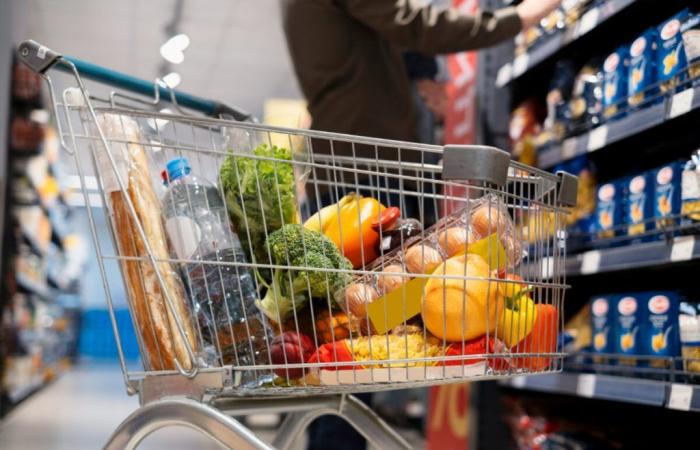Published on September 30, 2024
–
A
+
The French were surprised to rediscover, a few years ago, inflation, which had almost disappeared for a generation. They have seen the consequences on their purchasing power, their savings or the interest rates on their loans. Certainly, almost everywhere in the world, inflation has recently fallen, but it has not disappeared and can return in the event of monetary slippage or too lax budgetary management. According to the OECD, inflation is still 5.4% on average in 2024 (press release of September 4), 6.7% for the G20 and 2.6% for the euro zone. It’s better than in 2022 or 2023, but we are far from price stability. France, for the same period, is at 2.3% and the last known INSEE figure (September 2024) is only 1.2%, due to the exceptional drop in certain raw materials and the economic slowdown. . So inflation has not completely disappeared and it could return at any time.
Even with lower inflation than two years ago, there are sectors where prices are increasing much faster than average, for example sometimes food, sometimes energy, sometimes housing (rent and charges) while others are decreasing. If we go down to a more precise level, some products see their prices soar, others do not. When these products or services occupy a significant place in household spending, this weighs on their purchasing power. Certain politicians (and not only those of the New Popular Front), but also part of public opinion, then propose a simple answer: we must prevent prices from rising and to do so block them. This seems like common sense: the government just needs to block prices and they will remain stable. But this is a major mistake and the shortest path to shortage of the product whose price is blocked.
Price is an indicator
Human needs are infinite and the means to meet them (raw materials, energy, capital, human resources, etc.) are limited: the fight against scarcity is therefore at the heart of the economy. No economic system escapes this reality. The market is the most effective way – and the most consistent with human nature and freedom – to reduce scarcity and best distribute resources. The heart of the market is the price mechanism. It is not only normal, but absolutely necessary for prices to vary, up or down; there is only a pathology if the majority of prices are rising (inflation) or falling (delation), which can be explained above all by an inappropriate, too lax or too restrictive monetary policy. But when money is well managed, the general price level is stable: some prices rise, others fall and the average is stable. Artificially preventing, through state intervention, these prices from rising or falling destroys all market efficiency.
Indeed, the price is first and foremost an indicator: it provides everyone (businesses and households) with information. A rising price is a sign of excess demand and insufficient supply for this product or service. It therefore indicates a tension and gives its nature. And of course a falling price is a sign of low demand in the face of too high supply. There is no other indicator, no other vector of conformation, in a market than price.
Price is an incentive
This information is an incentive: everyone, business or household, producer or consumer, is sensitive to incentives. If the price rises, consumers are encouraged, since their purchasing power is limited, to reduce their demand and switch to other, less expensive products. But the company, the producer, the distributor do not remain inactive in the face of this information that the price increase provides: it offers better profit prospects, it indicates the existence of outlets for this product and therefore it encourages an increase in price. product offering. Information has become an incentive and leads everyone to react and adapt. Of course, the opposite happens if the price falls
The price allows the return to equilibrium
This is where the market shows its superiority over any other system. Indeed, this reaction of supply and demand, of businesses and households, eliminates the initial imbalance and reduces scarcity. A rising price indicates insufficient supply and excess demand, a sign of a potential shortage; but the reaction of all leads to increasing supply and reducing demand, eliminating the imbalance and stabilizing the price. This is how companies, for example, constantly adapt to movements in demand and changes in customer choices. Of course, we must not understand this mechanism in a static way, as if prices were no longer going to move afterwards, since we have returned to equilibrium, but in a dynamic way, supply and demand changing and adapting. constantly. This is why, in a free market, prices are constantly moving. Unlike inflation, which is the rise in the majority or all of prices, the rise in the price of a product (or its fall) is not a disease, but is part of the normal functioning of the market, a consequence of the permanent modification of each person’s choices.
Price blocking causes shortage
Imagine a price that rises sharply, thus limiting customer purchases. A “benevolent” government, as some are calling for today, will decide to block the price of this product. In doing so, since the price is artificially reduced, it discourages producers (the product is not profitable for them, or not enough) and it encourages the customer, since it is cheaper. Inevitably, this results in a physical shortage of the product, since demand exceeds supply. We have not made scarcity disappear, we have prevented any mechanism for returning to balance and therefore the product is certainly less expensive, but there is not enough for everyone: that is the queue or the empty shelf. In the name of consumer protection and their purchasing power, we have actually deprived some of them of the product. Price blocking means a guaranteed shortage.
Lessons from history
The lessons of history are many and the result is always the same. In 301, under the Roman Empire, the Edict of Diocletian, setting a maximum price on goods, pushed merchants to no longer sell them on official markets, so as not to make losses, or to sell them at the market black at their true price. During the French Revolution, faced with a considerable increase in prices, a law, promulgated on May 4, 1793, fixed a maximum price of grains, therefore bread, by department, then a Maximum law of September 29, 1793 fixed a maximum decreasing price of grains and a large number of basic necessities. The results were immediate, similar to those of the Edict of Diocletian: collapse of supply on the markets, because no one wants to sell at a loss, causing a shortage of products and rationing, accompanied by denunciation, repression, imprisoning offenders, sometimes even guillotining! Dirigisme can lead to the road of servitude. Of course, part of the harvest ended up on the black market. Popular discontent was one of the causes of the Thermidorian reaction and the fall of Robespierre.
Control everywhere and, a fortiori, the blocking of prices have caused a shortage of products. We still see it today, in sectors where prices are controlled. This is the case for certain drugs, for which the arbitrary price set by social security leads laboratories to reduce the supply of unprofitable products at the set price. In some cities, where rent prices have risen significantly, rent controls have contributed to housing shortages, with some being taken off the market due to lack of profitability, while investors preferred to invest in more profitable sectors. We could multiply the examples endlessly, in many sectors. The effect is always the same: when the price is blocked, “it’s not expensive, but it’s gone”!
It may also happen that the government blocks certain prices to prevent them from falling (agricultural products, wages on the labor market, etc.). In this case, the perverse effects of the blockage cause an opposite reaction: the artificially high price encourages supply and discourages demand; this results in overproduction, for agricultural products, or in unemployment, on the labor market.
Price freedom and the German miracle
Conversely, when, after the defeat of Germany, prices soared, the future chancellor Ludwig Erhard, then director of the administration of the economy of the three western zones, then minister of the economy, released prices, quickly causing profit opportunities for businesses and therefore an increase in the supply of goods and services. This is one of the key measures at the origin of the German “economic miracle”. The result was that in the 1950s and 1970s, competition meant that inflation was lower in Germany, where prices were free, than in France, where they were administered.
Those who today advocate the freezing of prices, particularly of basic necessities, in the name of social justice, should reflect, in the face of economic reasoning and the lessons of history: is it social progress to artificially provoke the shortage of products whose prices were considered excessive? In the medium term, the rise in prices having stimulated supply and competition being at full strength, prices are stabilizing. Until the price mechanism produces its beneficial effects, there may be systems to help those for whom the high price constitutes a major obstacle (grants, housing allowance, etc.). Here as elsewhere, the paradox of the dirigistes is the same: they take measures to prevent the free market from functioning and then pretend to be surprised that it no longer works, in order to impose their ideological preconceptions. The truth is that only economic freedom ultimately promotes social progress.






